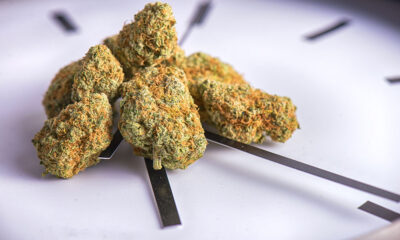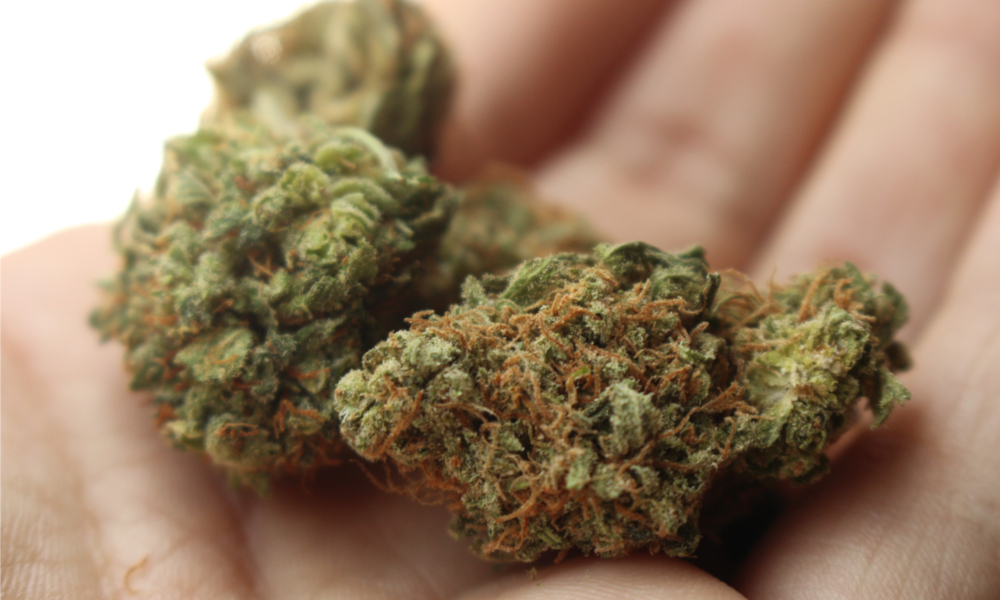
Culture
How To Review and Judge Cannabis Strains
Enjoying cannabis is easy enough, but reviewing or judging it formally can seem complicated. In truth, it’s not that tricky, so long as you have guidelines to follow.
What makes a cannabis connoisseur? Is it someone who can discern “top shelf” cannabis from “mids?” And if that’s the answer, what sets top-shelf cannabis apart and makes it worthy of that elevated placement?
I’ve been reviewing cannabis for years, but I only recently started judging cannabis competitions and the experience got me thinking about how both approaches can help regular cannabis consumers pick the ideal product for their needs. Yes, taste is subjective, but it is definitely possible to fairly assess the quality of a cannabis product. It just takes a little extra effort, an attention to detail and the right mindset.
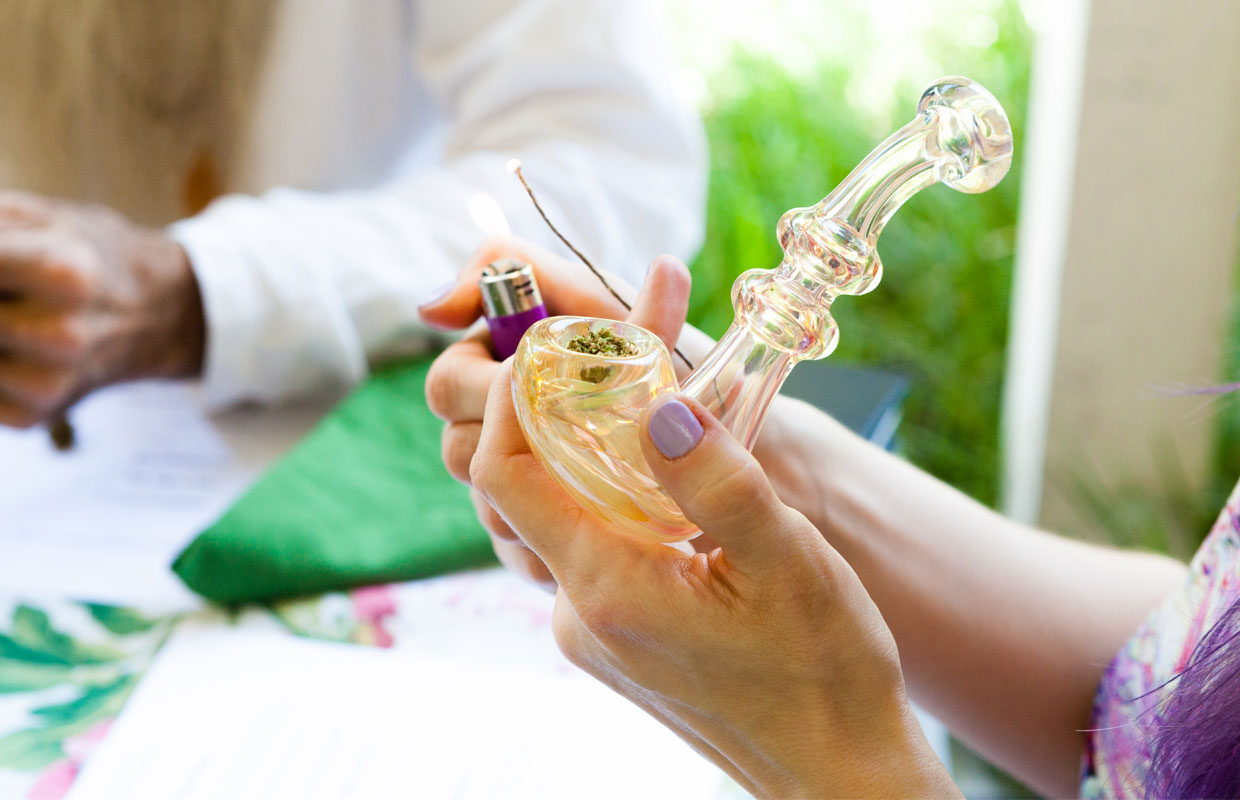
PHOTO Gracie Malley for Cannabis Now
How Writing a Cannabis Strain Review Compares to Judging Cannabis
A review is all about introducing and “illustrating” the sensory experience of a given product. Naturally, a good review will include some brass tacks information about the potency, strain and style of product, but the conceptual core is always the creation of a vicarious experience for the reader.
To that end, when we talk about the cannabis experience we should strive to include as much specific detail as possible. For example, don’t just say that strain is “potent” or that its aroma is “strong,” because that leaves so many unanswered questions: what specific impacts are potent? How does it make you feel? What’s the “strong” smell of? Imagine trying to describe the smell of pizza; you wouldn’t say the aroma of a freshly baked pizza is “strong” — not if you were trying to convey what it actually smells like. But if you said it smells like garlic and tomato sauce and oven caramelized cheese and dough, now you’re illustrating the aroma.
Judging cannabis, on the other hand, goes beyond identifying characteristics unique to a given sample. While reviewers will often simply provide a kind of “pass/fail” assessment of whether or not a product is worth purchasing, formal judging is all about synthesizing the many different properties of a sample into a unified assessment.
So a judge should still be thinking about the same qualities and characteristics as a reviewer, but with a more precise mind where the qualitative value of those characteristics is concerned. In other words, the observation and testing process for a review is the same as for judging, just less formal and precise in its conclusions. We aren’t just determining if something is good or bad, we’re concerned with just how good or bad it is.
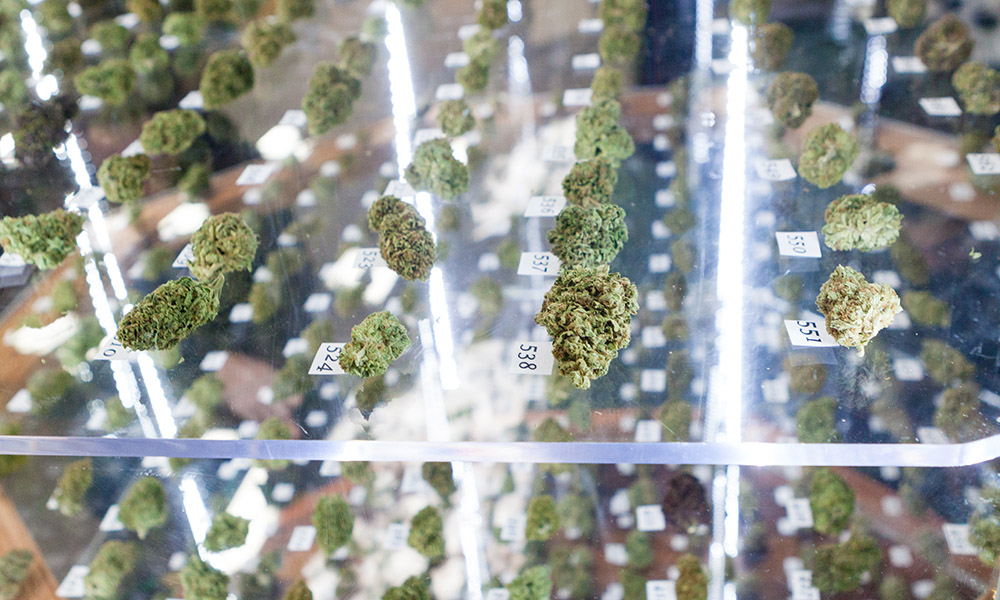
PHOTO Gracie Malley for Cannabis Now
Establish Your Categories and Judging Process
Start by setting a few benchmarks for quality — we’ll keep it simple and just consider appearance, smell, taste and effects, but you can add other categories like phenotypical novelty (how unique it is) or how smooth or harsh the smoke is. Now you can assess each of those categories individually for the purposes of a thorough review or apply a numerical value using a scale, such as 1-5, for formal judging. At the end of your assessment, tally the score for each category to find your final score. In our example scenario, there are four categories with a maximum possible score of five for each one, meaning the highest possible score — the score for a perfect sample — would be 20.
Let’s assess a hypothetical sample of an imaginary product: We’ve got an eighth of Hypothetical Haze from Fictional Farms and we’ve been tasked with reviewing and/or judging it. To do this, we’re going to examine each of the four basic categories we selected.
Consider the Aroma
As soon as we crack the jar our eighth came in, a pungent cloud of pine and citrus smacks us in the nostrils — and this is a good thing. Remember, even if we don’t personally like pine and/or citrus (we do), we still give recognition for the strength and clarity of those aroma components. A review can be a bit more subjective, but even if you hate smoking weed that smells like lemon-scented PineSol, remember that some of your readers might love it.
A big part of the mindset for reviewing or judging is learning to judge things for what they are, not what you wish they were.
We crack a bud open to more closely examine the aroma and find subtle nuances in the terpene profile; hints of herbaceous mint, whispers of grapefruit pith, subtle notes of earthy musk or berry sweetness. It might come off as pretentious, but we’re trying to encapsulate a complex suite of smells into a few sentences, so try to get as much detail as you can. If you can smell a unifying flavor, then note it, something such as “This particular strain invokes the aroma of a lemon spice cake.”
We almost never give a perfect score to any category, but this Hypothetical Haze is excellent — with a clear but complex smell — so we give it a 4.25.

PHOTO Gracie Malley for Cannabis Now
Determine the Taste
Taste is interesting, because the overwhelming majority of what we taste when we taste anything, not just cannabis, is informed by what we smell. The olfactory sense is dominant where taste is concerned, with the tongue providing only basic feedback on if something is sweet, hot, sour, bitter or “umami,” with all other flavor nuance coming from our sense of smell. That said, the process of heating or otherwise activating a cannabis product often changes the terpene profile. In the best cases, it “opens up” aroma notes and gives them fuller or more complex expression. In the bad cases, it erases, undermines or otherwise adulterates what was a pleasant aroma. In any event, the process is similar, only this time we’re pulling out flavor notes and cross-referencing them with the terpene profile we smelled earlier.
We smoke a joint of the Hypothetical Haze and find the flavor a bit muted compared to the aroma, which means a lower score for this category than that one — let’s say 2.5 for taste.
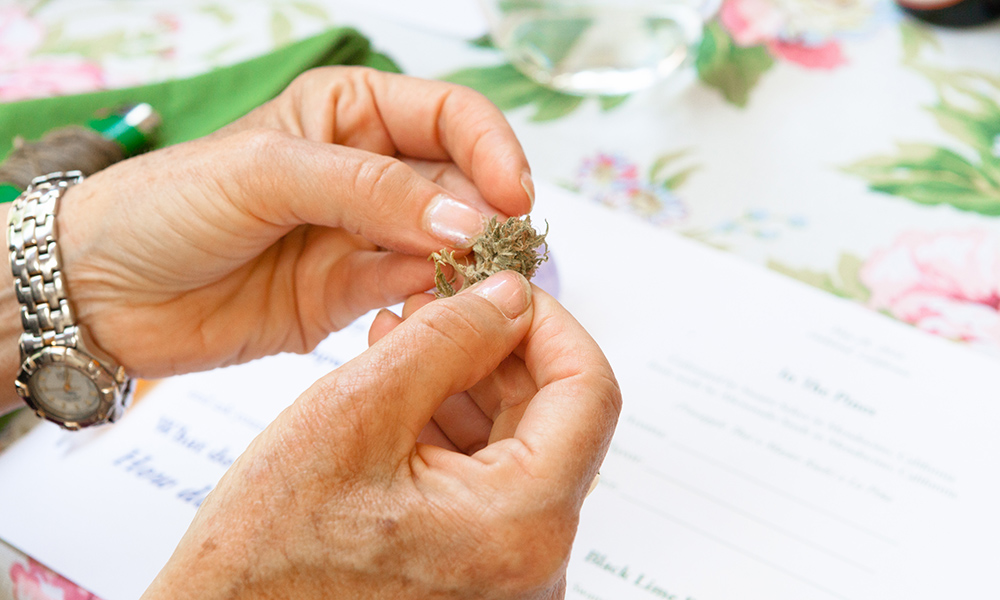
PHOTO Gracie Malley for Cannabis Now
Now, Look at Appearance
What makes a cannabis flower attractive? One way to judge is by how closely it cleaves to the appearance of a “typical” expression of the same strain — this is basically how they judge dog shows. There’s a rough ideal for each physical trait of a dog and the closer a show dog fits that mold, the higher its score. Cannabis judging is usually a bit more nuanced because the phenotypical expressions of the plant are more diverse and rapidly changing than dogs.
To that end, don’t be afraid to just focus on a few key characteristics, like color, bud structure and trichome distribution, density and clarity. Particularly in the case of a review, letting the reader know that the bud — in the case of our hypothetical sample — has a light, lime-green coloration with dense trichome coating but loose, wispy bud structure will provide enough information for them to make their own conclusion if it’s good or bad.
Our imaginary sample has a bright, lime green coloration punctuated by pronounced orange hairs and coated with sparkling trichomes. However, the structure is loose and the cure is a bit dry, so our score for this category is right around the middle at 3.25.

PHOTO Gracie Malley for Cannabis Now
Note the Effects
Finally, we must consider the effects of a given strain — perhaps the most difficult aspect of judging cannabis. For one thing, unlike flavor, smell and appearance, the physiological impacts of a cannabis product vary wildly from one individual to the next, informed by everything from the genetics of the consumer to the set and setting of the experience.
As with aroma, saying the effect is strong doesn’t communicate much, so try pinning down a feeling or sensation. Maybe the strain has stimulating or anxiolytic properties? Our example strain seems to have given me a deep sense of physical relaxation that borders on “couch lock” but isn’t putting me to sleep, largely because of its stimulating psychological effects, which lend themselves nicely to contemplation and study.
The effects are balanced and pronounced, so we score a 3.75 for this category.
A Few Final Tips
Our total score for this sample comes out to 13.75, which equals a “grade” of 68.75 percent of the possible 20 total points — not even a C- for this one. So maybe the Hypothetical Haze isn’t top shelf, but we now know enough about it to express what is good about it for the purposes of a review.
It’s always more fun to share cannabis with others, and reviewing or judging is no different. Some of these observations are best made during some quiet alone time, but it’s always a good idea to cross check your findings against what other people perceive. Maybe you can’t place the citrusy aroma of a sample, but when your roommate smells it, they immediately exclaim “tangerine!” Always get second and third opinions, and also remember to revisit a sample after your initial review to see if you missed anything.
And if you’re the type of person who’s sensitive to getting “too high,” remember that you don’t need to drown in the ocean to know that it’s deep: Use the smallest amount possible to feel the extent of the effects without overwhelming your senses. That said, don’t be afraid to dive deep into a sensory experience, after all, this is for science.
TELL US, what characteristics set top-shelf cannabis apart from the rest?



